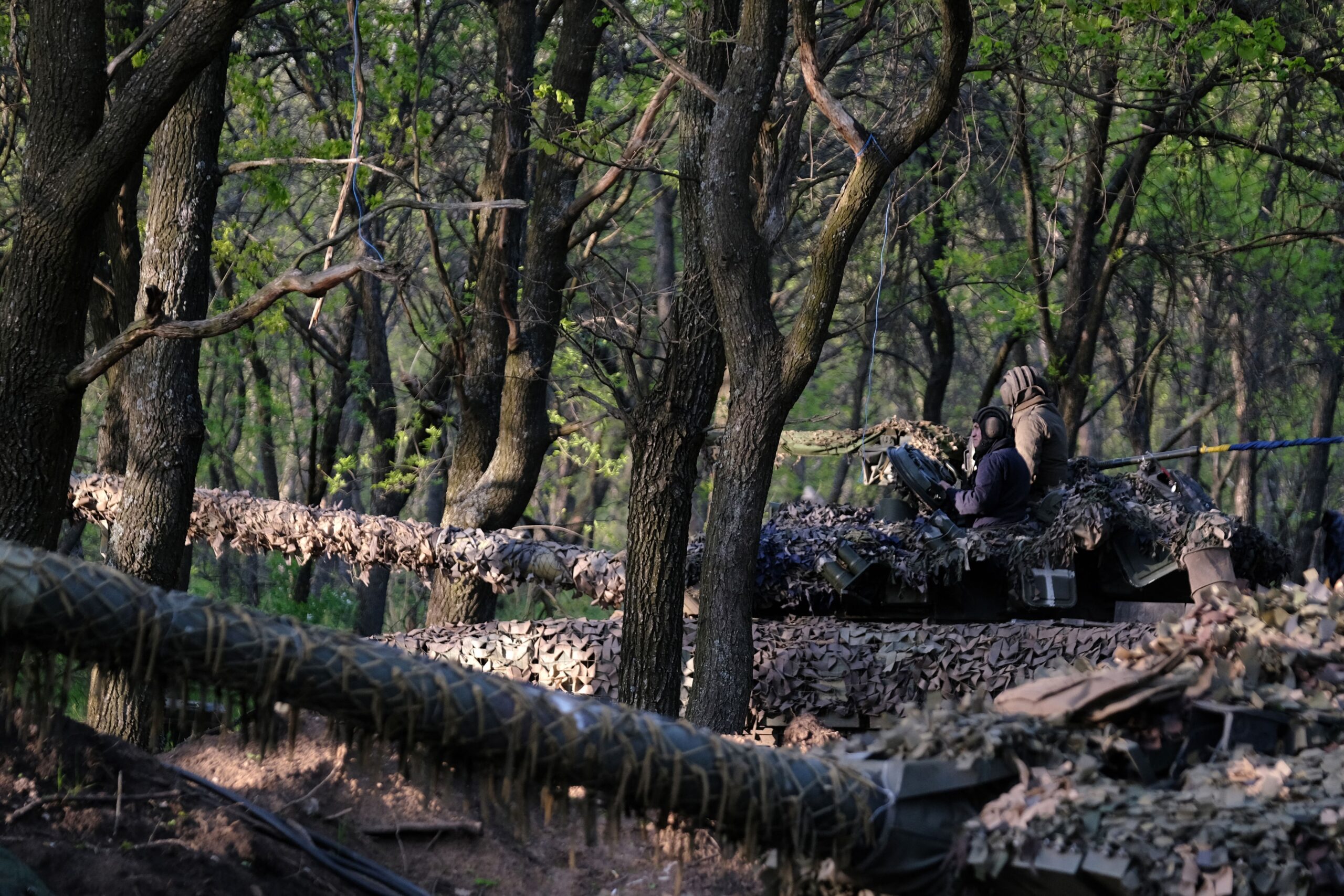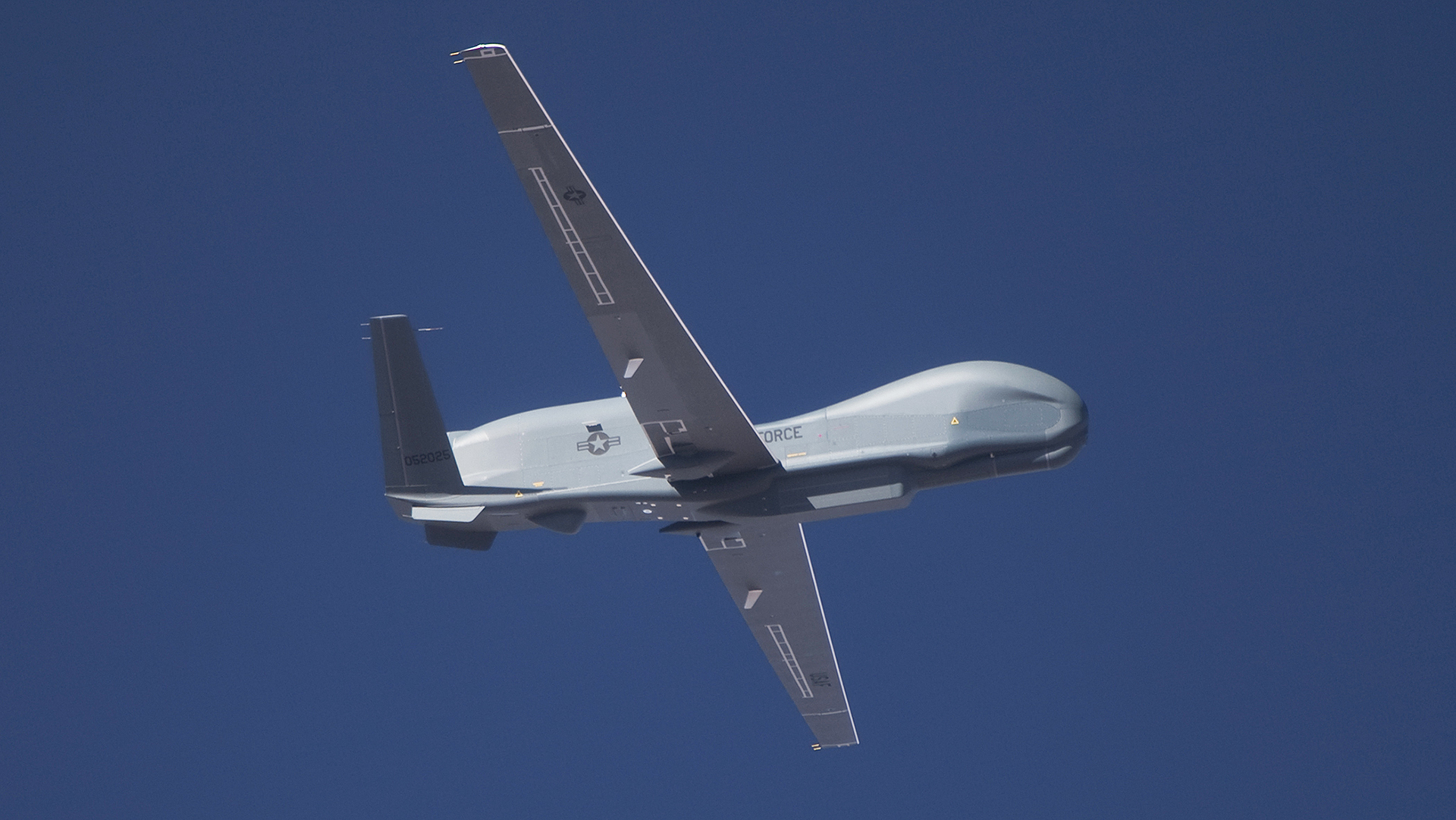There has been some interesting aerial surveillance activity over the Black Sea in recent hours, based on publicly available flight tracking software. Earlier today, a powerful radar-toting U.S. Air Force RQ-4B Global Hawk operating from Sicily was notably active off the Russian coast, not far from the cities of Sochi and Novorossiysk.
Some estimates suggest that the high-flying drone, callsign FORTE 11, may have approached as close as 54 nautical miles off the Russian coast. This is a somewhat unusual track for what have become routine RQ-4 operations over the Black Sea, which usually don’t venture beyond the central part of that body of water, although they have been tracking farther east as of late.
The interest in the Russian coastline and the littoral area off of it isn’t clear at this time. There certainly is no lack of potential surveillance targets, from standard-type ones to far more ‘unique’ ones.
Around the same time as the RQ-4’s mission, a U.K. Royal Air Force RC-135W Rivet Joint was operating along the coast of Russian-occupied Crimea, a much more routine activity.
Operations of NATO surveillance aircraft over the Black Sea have become increasingly tense after multiple dangerous encounters with Russian fighter-interceptors. One of these incidents brought down an MQ-9 Reaper and another included an errant missile launch at a RC-135W with dozens of souls onboard.
The RQ-4 does fly much higher than its manned counterparts, upwards of 60,000 feet, making such ‘dangerous’ close-encounter intercepts a major challenge for fighter aircraft.
Before we dive into the latest news from Ukraine, The War Zone readers can get caught up on our previous rolling coverage here.
The Latest
The U.S. is now backing Ukraine’s claim that it shot down a Kinzhal air-launched ballistic missile with hypersonic performance over Kyiv just days ago with a Patriot missile. You can read our recent report on the incident here.
As President Vladimir Putin spoke at a notably low-key Victory Day parade in Moscow’s Red Square today, Ukrainian officials talked of Kyiv’s planned counteroffensive, which appears as if it could be imminent. Ukrainian Prime Minister Denys Shmyhal said today that the counteroffensive would be a “very important” operation and one that must “demonstrate success” against Russian forces.
In an interview with Sky News, Shmyhal said the long-awaited operation would only be launched when the time is right and gave no hint as to when that might be. Referencing the Victory Day parade in Moscow, the Ukrainian prime minister added: “I’m sure that the most important victory day for Ukraine will be victory day over this terrible Russian aggression — full-scale aggression — against Ukraine.”
Shmyhal was speaking while in the United Kingdom, where he met the newly crowned King Charles III as well as visited Ukrainian troops undergoing training with the British Army. At a military training area on Salisbury Plain, in southwest England, Shmyhal saw Ukrainian recruits receive training from British and New Zealand troops as part of a U.K.-led assistance program.
While there has been much speculation about the nature of the Ukrainian counteroffensive and where it might be directed, Western officials also today issued words of caution around the potential gains that Kyiv’s forces might make.
The U.K. Foreign Secretary James Cleverly warned that people should remain realistic about the scope of what Ukraine’s counteroffensive might achieve. “We have to be realistic,” Cleverly said. “This is the real world; this is not a Hollywood movie.”
A somewhat pessimistic but frank viewpoint was put across by U.N. Secretary-General António Guterres who told a Spanish newspaper today that he currently sees no prospect of peace between Russia and Ukraine, since “both sides are convinced that they can win.” He added that the prospects of the U.N. being able to broker some kind of an end to the conflict appeared slim, as of now. “Unfortunately, I don’t think peace negotiations are possible at the moment,” he said.
Meanwhile, in Moscow, President Putin told Russian soldiers fighting in Ukraine that the “whole country is praying for them,” and took the opportunity to try and draw parallels between the “special military operation” in Ukraine and the defeat of Nazi Germany 78 years ago. “Today, civilization is again at a decisive, turning point, a real war has been unleashed against us again,” Putin declared.
The usual parade was a much smaller affair than in the past, with a single World War II-vintage T-34/85 tank being the only tracked fighting vehicle of any kind to appear. Unsurprisingly, the Ukrainian Armed Forces leaped on the opportunity to mock the downsized parade:
You can read our full report on the Victory Day celebrations in Moscow here.
The marking of Victory Day across Russia and Russian-occupied territories didn’t see a let up in the cruise missile offensive being unleashed on Ukraine by Moscow’s forces.
Serhiy Popko, the head of Kyiv’s city military administration, took to the Telegram messaging app to announce that Russia launched around 15 cruise missiles against the Ukrainian capital today. This was the second day of cruise missile strikes in a row, although Popko also claimed that all of the missiles were successfully defeated by Ukrainian air defense systems. “As at the front, the plans of the aggressor failed,” he said.
According to Popko, the Ukrainian authorities believed there were no casualties as a result of today’s cruise missile and that it involved missiles launched from the Caspian Sea region, apparently from Tu-95MS bombers, although this is unconfirmed. Damage appears to have been fairly limited, too, with the Kyiv mayor, Vitali Klitschko, describing debris falling on a house in the Holosiivskyi district in the southwest of the city, but there were no casualties and not much damage.
In eastern Ukraine, meanwhile, the months of fierce fighting for the city of Bakhmut appear to show few signs of coming to an end. Once again, Yevgeny Prigozhin, the head of the Wagner Group, a Russian private military company, is very much at the center of developments there.

After threatening to withdraw his troops from the city, which has become the focus of a long-running Russian effort to capture it, due to a lack of ammunition, Prigozhin has now said his soldiers would be considered “traitors” if they abandon their positions. The Wagner Group boss has, however, continued to press the Kremlin for more ammunition.
A U.K.-led group of European countries has asked for expressions of interest to supply Ukraine with undisclosed long-range missiles. The International Fund for Ukraine posted the notice last week, calling for munitions that offer a range of up to 190 miles.
According to a report in the Washington Post, the United Kingdom “appears poised” to provide Kyiv with the kinds of long-range missiles that the Biden administration has long denied it. The weapons in question have not been disclosed but, according to the same source, would likely be MBDA Storm Shadow conventionally armed cruise missiles, the specifications and capabilities of which closely match the requirements laid out in the notice. At this point, however, no final decision has been made, an unnamed British official said.
Other new hardware that is now in Ukrainian hands includes Israeli-made air defense radar systems, which were reportedly deployed in Kyiv as of Monday, according to Israeli media reports. The ieMHR radars in question are produced by Rada Electronic Industries, but they were acquired for Ukraine by a Lithuanian volunteer organization known as Blue/Yellow. Sixteen of the radars were reportedly delivered last week, with three of those now being used to help defend the Ukrainian capital. The systems are designed to detect aerial threats including missiles, rockets, mortar shells, helicopters, and especially drones within a radius of around 6.2 miles.
The latest U.S. security assistance package for Ukraine was announced today. In particular, this includes additional munitions to bolster Ukraine’s air defenses and artillery ammunition stockpiles.
This package, confirmed by the U.S. Department of Defense, is valued at up to $1.2 billion and is being provided under the Ukraine Security Assistance Initiative (USAI). Full details of what it includes are as follows:
- Additional air defense systems and munitions
- Equipment to integrate Western air defense launchers, missiles, and radars with Ukraine’s air defense systems
- Ammunition for counter-Unmanned Aerial Systems
- 155mm artillery rounds
- Commercial satellite imagery services
- Support for training, maintenance, and sustainment activities
Ukrainian ammunition supply of another kind brings us to the end of this report. The video below shows a locally developed expanded backpack-style belt-fed magazine that can apparently be used to feed different machine guns, including the American-made M240, the Soviet-era PKM, and others. Known as the Murena, the system has a capacity for 650 rounds of ammunition and also includes a spare barrel. Which, in all, likelihood, is going to be needed pretty rapidly, once those rounds begin to be used up.
That’s it for now. We’ll update this story when we have more news to report about Ukraine.
Contact the author: thomas@thewarzone.com
